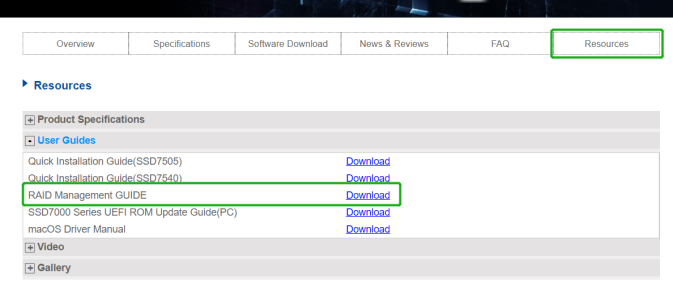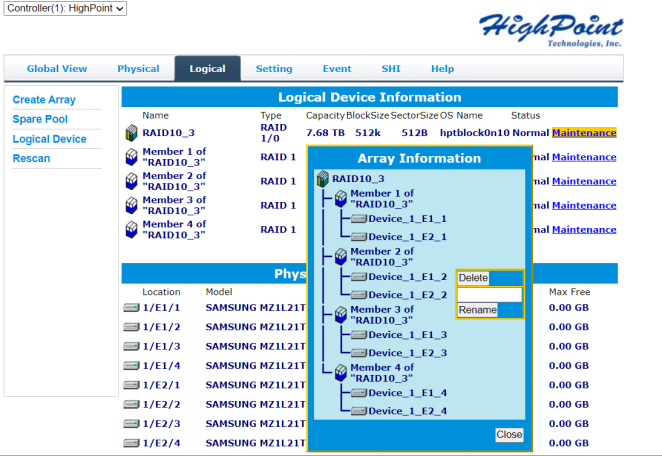How to Create a RAID 10 Array using the CLI
- Tutorial Videos & Installation Guides
-
FAQ
FnL Product Line Determining PCIe lane assignment for your SSD7000 Controller MacOS Windows Linux SSD6200 Series Controller SSD7000 Series Controller RocketStor Series RocketRAID Series RocketU Series Motherboard Compatible Report Other Questions Standard Responses for Known Issues or Subjects WebGUI eStore Gen5
- HPT
- Compatibility Reports
- FAQ
- Workaround Issue
How to Create a RAID 10 Array using the CLI
Using the HighPoint Command Line Interface (CLI)
For Windows or Linux operating systems; please refer to the resources section of the corresponding product page to obtain the complete RAID Management Guide.
The following is a link to HighPoint's official website:
https://www.highpoint-tech.com/USA_new/main.htm Create a RAID10 using the command line interface (CLI)
Create a RAID10 using the command line interface (CLI)
Enter the following command using the CLI to create a RAID10 array:
create RAID10 disks=1/E1/1,1/E2/1,1/E1/2,1/E2/2,1/E1/3,1/E2/3,1/E1/4,1/E2/4 capacity=* init=quickinit bs=512k
Note: RAID 10 arrays are comprised of two RAID 1 arrays that have been striped together (RAID 0). The drives that constitute a RAID 10 array are always arranged in pairs (groups of two), hence the complex command line.
* refers to the desired capacity (please check the CLI RAID Management Guide for more information).
Checking the RAID10 configuration using the WebGUI management software
Access the Logical tab, and then click on “Maintenance” for the RAID10 array; this will allow you to view information about each drives (note how they are organized in pairs).